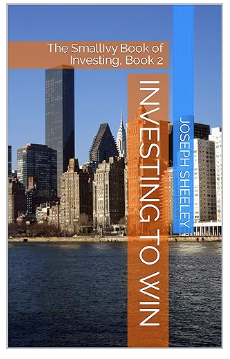
Photo by Eva Bronzini on Pexels.com
" data-orig-size="867,1300" sizes="(max-width: 867px) 100vw, 867px" data-image-title="visible annual rings of a tree trunk" data-orig-file="https://smallivy.files.wordpress.com/2024/02/pexels-photo-5941088.jpeg" data-image-description="" data-image-meta="{"aperture":"0","credit":"","camera":"","caption":"","created_timestamp":"0","copyright":"","focal_length":"0","iso":"0","shutter_speed":"0","title":"","orientation":"0"}" width="867" data-medium-file="https://smallivy.files.wordpress.com/2024/02/pexels-photo-5941088.jpeg?w=200" data-permalink="https://smallivy.com/2024/02/11/are-those-returns-average-or-annualized/pexels-photo-5941088/" alt="" height="1300" srcset="https://smallivy.files.wordpress.com/2024/02/pexels-photo-5941088.jpeg 867w, https://smallivy.files.wordpress.com/2024/02/pexels-photo-5941088.jpeg?w=100&h;=150 100w, https://smallivy.files.wordpress.com/2024/02/pexels-photo-5941088.jpeg?w=200&h;=300 200w, https://smallivy.files.wordpress.com/2024/02/pexels-photo-5941088.jpeg?w=768&h;=1152 768w" class="wp-image-24033" data-large-file="https://smallivy.files.wordpress.com/2024/02/pexels-photo-5941088.jpeg?w=683" />Photo by Eva Bronzini on Pexels.comAverage and Annualized
Often you’ll hear returns from a fund quoted in an advertisement. If you look at your 401k statement or the prospectus for a fund, you’ll also see returns for different time periods like YTD, 1 year, 5 year, and so on. You may also read that a certain group of assets like stocks or bonds has a certain rate of return.
Often when we view these numbers, we compare them to what we could get in a bank or what we are paying out on loans like our mortgage or credit cards. We might also use them to project how much money we’ll have in the future if we invest in the fund. But it is important to understand what these rates of return are and how they are calculated. In particular, we need to know if they are average or annualized. Today we’ll discuss the difference and what they mean for our investments.
Want to learn the secrets to investing and really turbocharge your returns? Check out the second book in The Small Investor series, Investing to Win. This book presents 40 years of investing experience. Someone starting with zero knowledge of investing and the stock market could take this book and learn all that they needed to invest and do well. It would also be useful to someone who has invested and traded stocks for a while but who is really not getting the kind of returns desired.

Investing to Win
(Note, this site contains affiliate links. As an Amazon Associate I earn from qualifying purchases. When you click on an affiliate link and buy something, The Small Investor will get a small commission for the referral. You are charged nothing extra for the purchase. This helps keep The Small Investor going and free. I don’t recommend any products I do not fully support. If you would like to help but don’t see anything you need, feel free to visit Amazon through this link and buy whatever you wish. The Small Investor will get a small commission when you do, again at no cost to you.)
What’s “average” return?
Average returns are often provided since they are easy to calculate. For example, the average return for one year is just the difference in the value of the equity or index at the end to the start of the year, all divided by the value at the start of the year. So, if XYZ fund started the year at 1400 and ended the year at 2000, the average return would be :
Return = (2000-1400)/(1400) = 42.9%
When the average return is reported over several years, like a 3-year or 10-year period, the average of the yearly returns is usually reported. For example, if the yearly returns for XYZ fund are 10%, -14%, and 20% over a three-year period, 3-year average yearly return would be:
3-Year Average Yearly Return = (10% – 14% + 20%)/(3) = 5.3%
What is annualized return?
Annualized returns are totally different than average returns and the difference is very important to understand. The issue is that returns in things like stocks are not steady and equal each year, but instead vary radically from year to year. This makes how the returns for each year are ordered important. You can have the same average rates of return but get radically different annualized rates of returns. And it is the annualized rate of return that tells how much money you’ll have in the end. It is even possible to have a positive average return yet end up losing money overall!
The annualized rate of return is the interest rate a deposit in the bank, where interest is paid out at a constant rate, would need to have to result in the same gain over the time period. So, if you put $1000 in fund XYZ and had $2000 at the end of 7.2 years, it would be the same as if you had put $1000 into a bank CD paying out 10% interest for 7.2 years. The annualized rate of return would be 10% for the period.
There are formulas to determine annualized returns, but the math gets a little tricky. The easiest way to determine how much money you have if you know the annualized return is to use one of the many investment calculators available online. If you know the start and end values of the portfolio, you can also use an online calculator to determine annualized return by putting the start value in and guessing a rate of return, then adjusting the rate up or down until you match your end value.
(If you’d like to learn more about how to decide how much you should put in different types of assets, Sample Mutual Fund Portfolios gives lots of information and examples of how to make allocations for all sorts of different goals, including retirement.)

Rate of return and investing
Understanding the difference in rates of return is important when evaluating investments or predicting future account values. For example, let’s say that you have two funds. The annual returns of Fund A for the last 5 years are:
20182019202020212022Average
10%10%10%10%10%10%
Fund A yearly and average returnsThe annual returns for Fund B for the same years are:
20182019202020212022Average
50%-50%30%-30%10%10%
Fund B yearly and average returnsBoth funds have exactly the same rate average yearly rate of return of 10%. You might therefore feel like the two funds are equivalent, so investing in either would end with the same result, but you would be wrong. If you put $1000 in Fund A in 2018, you would have at the end of 2022:
Start20182019202020212022
$1000$1100$1210$1321$1453$1598
Fund A Year-End AmountsIf instead you put $1000 into Fund B, your year-end account values would be:
Start20182019202020212022
$1000$1500$750$975$683$751
Fund B Year-End AmountsYou end up with a lot less money at the end of the five years if you invested in Fund B even though the average annual returns for the two funds are exactly the same. This is because the annualized return for Fund A for this five-year period is +10%, while that for Fund B is around -5.5%.
This is an issue called sequence risk. The sequence of returns: when returns occur over the time period, affect the amount you end up with at the end of the period. Sequence risk is even more important if you’re pulling money out of the account each year. In general, the earlier big declines in the portfolio happen, the less you’ll end up with at the end even if the average of the yearly returns are the same. This means you’re also more likely to run out of money if big declines happen early.

Steadiness matters
One thing to learn from this example is that steadiness of returns matters, particularly if you’re investing for a relatively short period of time. For example, if you’re investing for five years and you can get a CD paying 7% per year, you’d probably be better off doing that than investing in a stock fund that has an average annual return of 10% if those returns involved big fluctuations up and down. It is possible that you would do better in the stock fund, but the 7% in the CD is annualized, so you’ll win out more often in the CD than you will in the stock fund. If you really need the money at the end of the 5-year period, having a guaranteed annualized rate of return is even more important.
The wealthiest people read a lot of non-fiction books. Don’t have time to read books because of your long commute? Listen to your books in stead with Audible. Free trial at the link below.
Likewise, if you had a low-volatility stock fund with a 7% average return, you would often be better off there than in a highly volatile fund with a 12% average return over a five-year period. The reason is that the returns from the first fund would vary less and be around 7% each year, where the wild fund would have big up years, but also big down years. If the down years happened at the start of the five-year period, your returns would suffer. The likeliness of this happening makes the more stable fund the better bet.
Over long periods of time, however, the annualized returns of many volatile investments will be better than those from fixed-return assets or more stable investments. The reason is that the market prices in the risk created by the higher volatility into the price for the riskier assets. This means that the annualized return over long periods of time will tend to be higher for more volatile assets than more stable ones. You just need to hold the volatile assets long enough to be very likely to get the annualized returns. For example, if you hold a large cap stock fund for 30 years, you’ll end up with more than you will if you hold a government bond fund instead almost every time. The long-term annualized rate of return for stock funds is higher than that for bond funds because of the greater volatility involved.
Have a burning investing question you’d like answered? Please send to [email protected] or leave in a comment.
Follow on Twitter to get news about new articles. @SmalllIvy
Disclaimer: This blog is not meant to give financial planning or tax advice. It gives general information on investment strategy, picking stocks, and generally managing money to build wealth. It is not a solicitation to buy or sell stocks or any security. Financial planning advice should be sought from a certified financial planner, which the author is not. Tax advice should be sought from a CPA. All investments involve risk and the reader as urged to consider risks carefully and seek the advice of experts if needed before investing.
